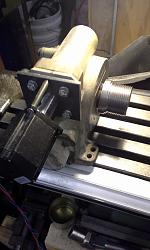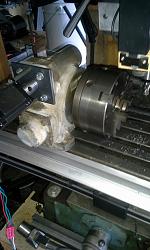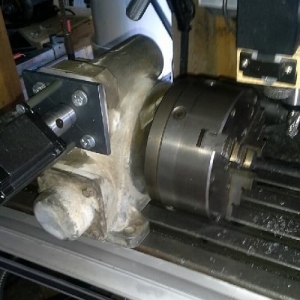Hi Neophyte:
I read your article about your Dividing Head adaptation and it so happens that I'm planning a similar conversion using a 10" Rotary Table. To that effect, I decided (empirically) to go for a NEMA 23 Stepper Motor 200 steps, 24 V, 3A, 360 oz.in double shaft to allow attachment of a crank wheel at the other end. Since I don't have the capacity to program o assemble a driver and controller, I decided to go for a "stand alone" Programmable Driver/Controller sold by a guy by the name of Bryan Mumford in California.
It looks like a big calculator and can do all kinds of stuff including jogging and continual rotation plus makes built-in adjustments for "slack" or free play. By the way you obviously run into that situation, were you able to program your controller accordingly?
Also, what size and specs is your motor? If you wish you can write to me at
scrdmgl@gmail.com
Regards from Toronto, Canada
Jorge



 LinkBack URL
LinkBack URL About LinkBacks
About LinkBacks




 Reply With Quote
Reply With Quote

 Please do keep us posted on your progress. Do you have any pics of the rotary table conversion underway?
Please do keep us posted on your progress. Do you have any pics of the rotary table conversion underway?

 This may not hold true of all of the motor controllers, but the one I was initially using couldn't tolerate the output pulses from the stepper motor.
This may not hold true of all of the motor controllers, but the one I was initially using couldn't tolerate the output pulses from the stepper motor.

Bookmarks